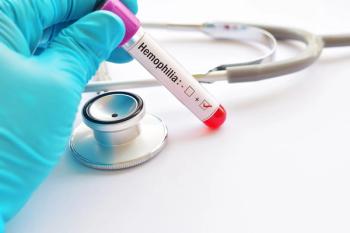
Treating Childhood Obesity
Children and adolescents have not escaped the epidemic of obesity that is sweeping the country. Between 1963 and 1970, about 4% of children ages 6 to 11 and 12 to 19 were obese, noted Irene Fennoy, MD, MPH, pediatric endocrinologist at Columbia University Medical Center in New York. By 2004, 19% of 6- to 11-year-olds and 17% of 12- to 19-year-olds were overweight. So were 14% of children aged 2 to 5, a group that barely registered in 1963.
Children and adolescents have not escaped the epidemic of obesity that is sweeping thecountry. Between 1963 and 1970, about 4% of children ages 6 to 11 and 12 to 19 were obese, notedIrene Fennoy, MD, MPH, pediatric endocrinologist at Columbia University Medical Center in New York.By 2004, 19% of 6- to 11-year-olds and 17% of 12- to 19-year-olds were overweight. So were 14% ofchildren aged 2 to 5, a group that barely registered in 1963.
"The genetic component contributes 50% of body mass index [BMI] variation," Dr. Fennoy told two standing room-only sessions on Saturday. "But the key component of obesity is environmental.Children today are eating more and exercising less."
Childhood obesity is generally measured using BMI, she continued. Children between the 85thand 95th percentiles are at risk of obesity, children at the 95th percentile or higher are obese.(See
Longitudinal studies have shown a strong correlation between childhood and adult obesities.Among 12-year-olds whose BMI-for-age is between the 50th and 84th percentiles, 23% grow into obeseadults, defined as a BMI of 30 or higher. Among children at risk for obesity, up to 64% grow intoobese adults, depending on their childhood BMI. Among children at the 99th percentile or above forBMI, 100% become obese adults.
"The longer you wait to intervene," Dr. Fennoy said, "the less likely that child will becomea healthy adult."
Childhood obesity is associated with many of the same complications seen in obese adults:insulin resistance, glucose intolerance, hypertension, hyperlipidemia, metabolic syndrome, anddiabetes. Diet and exercise are the most successful interventions, although some children also needpharmacotherapy and surgery.
On the dietary side, a low-glycemic-index diet produces better insulin and glucose patterns,greater sustained weight loss, and more desirable changes in lipid patterns than other types of diet.Exercise also improves lipid profiles and insulin sensitivity as it reduces weight. In addition to aformal exercise program, it is helpful to limit the amount of time children devote to video games,computer use, and television watching.
"We don't really have any good tools beyond diet and exercise," Dr. Fennoy said. "It is justas important to look for opportunities to reduce sedentary activities as it is to encourage physicalactivity and more appropriate eating habits."
Newsletter
Access practical, evidence-based guidance to support better care for our youngest patients. Join our email list for the latest clinical updates.











